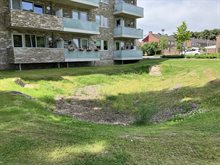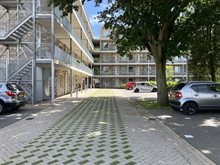New water system helps Maastricht neighbourhood cope with heavy downpours
The Malpertuis neighbourhood in the city of Maastricht has seen major renovations in recent years. An entirely new water system was constructed around Nobellaan, Gentelaan, Widelanken and Cantecleerstraat streets. A combination of underground peak water storage, permeable pavement and five bioswales now ensures that the neighbourhood is capable of coping with heavy downpours.
What was the reason for initiating this project?
This project was prompted by the restructuring plans of Servatius Wonen & Vastgoed housing corporation. These plans involved the demolition of 117 houses and the construction of 102 new houses, as well as a redesign of the public space. The Municipality of Maastricht seized this opportunity to improve the entire area’s resilience against extreme downpours.
Special infiltration sewers
The downspouts of the new houses were disconnected from the sewer system following the construction of underground peak water storage facilities, permeable pavements and five bioswales in the public space. Furthermore, underneath the new roads, special plastic infiltration sewers were constructed with a diameter of 300 mm. Openings in these sewers allow rainwater from rooftops and from the newly paved areas to drain directly below the surface upon hitting the ground.
Bioswales for extra heavy downpours
Should the infiltration sewers fill up during extremely heavy downpours, all the water from the infiltration sewers can flow to the five bioswales. Via the walls of the bioswales, the water will then seep into the subsoil. Three of the bioswales are interconnected via a ditch system. The lowest lying bioswale has an above-ground overflow for when the system fills up entirely. From this overflow, the water can flow to the lower lying road with cesspits, and from there it can flow to the sewer system. Furthermore, the roadways between the parking spaces have been surfaced with Greenbrick water-permeable pavement, enabling additional water filtration.

System works well
The system has been designed for collecting and processing downpours of 45 to 80 mm per square metre. Within two days of such a downpour, 90% of the system must have emptied. So far, the system has worked well: recent heavy downpours have not caused trouble.
Contact person
Chantal Kurvers
Gemeente Maastricht
Chantal.kurvers@maastricht.nl
